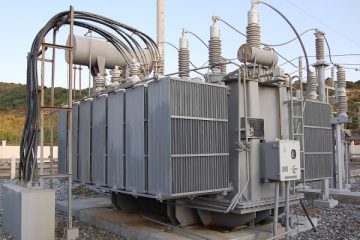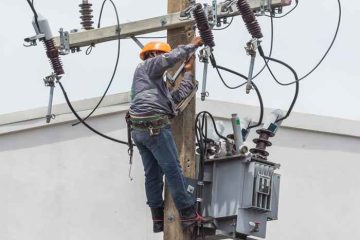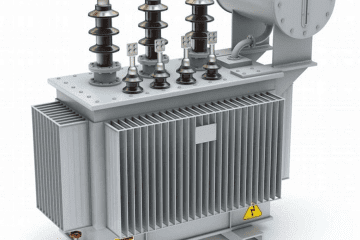Transformers play a critical role in ensuring a reliable and efficient electricity supply, acting as the backbone of electric power transmission and distribution systems. However, as transformers age, the possibility of unexpected failures and outages increases. This makes assessing the condition of transformer insulation one of the most crucial tasks for maintenance engineers. The main objective is to extend the transformer’s service life and optimize performance by increasing availability and reducing operating costs.
At Just HardRich Global Resources Limited, we understand the importance of reliable and continuous power. We are Nigeria’s choicest Electrical Power and Control Engineering Company, committed to delivering innovative solutions that ensure your transformers run smoothly, efficiently, and without unexpected breakdowns. Through regular inspection and proper diagnostic methods, we help our clients enhance the longevity and performance of their transformers.
Why Is Transformer Insulation Important?
The insulation system of a transformer is designed to provide a barrier between its electrical and non-electrical components, preventing electrical currents from straying where they shouldn’t. Transformer insulation typically consists of materials such as transformer oil (a type of hydrocarbon oil) and cellulose paper (winding insulation). These materials degrade over time due to factors like moisture, heat, oxygen, and other contaminants.
Without proper insulation, transformers can experience electrical breakdowns, overheating, and other issues that lead to significant system failures. Regularly assessing the insulation state is crucial to mitigate risks, reduce costs, and ensure smooth operation.
Just HardRich Global Resources Limited offers comprehensive diagnostic services that address insulation deterioration early, ensuring the continued reliability of your power systems.
Importance of Regular Maintenance and Inspection
Regular maintenance of transformers is essential to ensure uninterrupted and reliable service. Maintenance practices must include periodic inspections and corrective measures taken promptly to prevent significant breakdowns. The frequency of these inspections largely depends on the operating environment. For clean, dry areas, inspections once a year may suffice, but for transformers in dust- or chemical-laden environments, inspections should be more frequent (every three to six months).
Beyond just the transformer itself, it’s also important to inspect other components such as motors, fans, and cooling systems, as these can impact the overall performance.
At Just HardRich Global Resources Limited, we emphasize a proactive approach to maintenance, helping our clients identify potential issues before they escalate. Our team of experts utilizes state-of-the-art tools and technology to provide thorough diagnostic assessments, ensuring your equipment remains in optimal condition.
Transformer Insulation System Overview
The insulating materials used in transformers, primarily mineral oil and cellulose paper, are vulnerable to factors such as moisture, oxygen, heat, and electrical stress. These elements can lead to a decline in the dielectric (insulating) strength of both the oil and the winding insulation systems.
Key Factors Affecting Insulation Degradation:
- Moisture: Reduces dielectric strength, increasing the risk of electrical failures.
- Oxygen: Causes oxidation, leading to sludging in the transformer oil.
- Heat: Accelerates the degradation process, weakening insulation materials.
- Electric Stress: Can lead to partial discharges and other damaging electrical phenomena.
Our solutions at Just HardRich Global Resources Limited include thorough insulation assessments and maintenance plans to keep these factors in check, ensuring optimal performance and reliability.
Diagnostic Methods for Assessing Transformer Insulation
Regular diagnostic testing can identify the condition of the insulation system and prevent unexpected failures. Diagnostic methods fall under two broad categories: chemical techniques and electrical diagnostic methods.
1. Chemical Diagnostic Techniques
A. Moisture Analysis in Transformer Oil Moisture in transformer oil is detrimental as it lowers the dielectric strength, leading to insulation failure. Analyzing moisture content is crucial to maintaining the integrity of the insulation system.
Modern diagnostic tools, such as near-infrared spectroscopy (NIR) and thin-film capacitive humidity sensors, allow for precise moisture measurement even in varying temperature conditions. These technologies can detect small changes in moisture content, allowing for timely intervention.
B. Dissolved Gas Analysis (DGA) Dissolved Gas Analysis is one of the most widely used techniques to detect incipient faults in transformers. It identifies gases produced by the degradation of transformer oil and cellulose paper insulation. Common gases analyzed include methane, ethane, ethylene, acetylene, hydrogen, carbon dioxide, and carbon monoxide.
Diagnostic Methods for Gas Detection:
- Doernenberg Method: Utilizes ratios of hydrocarbon gases to identify fault conditions.
- Rogers Method: Compares hydrocarbon ratios with standard limits set by IEEE.
- Duval’s Triangle Method: Analyzes dissolved key gases, providing a visual representation for easier interpretation of fault conditions.
C. Degree of Polymerization (DP) Measurement The DP measurement provides insights into the condition of the cellulose paper insulation. High DP values indicate robust insulation, while lower DP values suggest degradation. The viscometric method (DPv) is commonly used to measure DP, but emerging technologies such as Gel Permeation Chromatography (GPC) offer more detailed assessments by analyzing molecular weight distribution.
D. Furan Analysis via High-Performance Liquid Chromatography (HPLC) Furan compounds are by-products of cellulose insulation degradation. Their presence indicates the breakdown of the insulation material. Monitoring furan levels provides an understanding of the insulation’s age and condition, making it easier to determine when to replace the transformer before critical failures occur.
Just HardRich Global Resources Limited employs these chemical diagnostic techniques as part of our comprehensive maintenance services, ensuring timely detection and resolution of potential issues.
2. Electrical Diagnostic Methods
A. Time Domain Polarization Method This method examines the behavior of dielectric materials under an electric field. By applying a direct voltage and observing the return voltage (RV), engineers can determine the moisture and aging levels of the insulation. Shorter central time constants (a measure of the return voltage peak) typically indicate worse insulation conditions.
This method has proven particularly effective in determining the effectiveness of drying treatments, offering insights into whether insulation should be replaced or can be restored.
B. Frequency Domain Polarization Method This method measures the dissipation factor of the insulation material across various frequencies. It helps determine the dielectric properties, revealing how insulation ages and how moisture content affects the transformer’s performance. Unlike the time domain method, the frequency domain polarization is not affected by the geometry of the insulation, making it a reliable technique even when detailed design information is unavailable.
Emerging Trends and Innovative Tools
Advancements in diagnostic technologies have brought about improved methods for analyzing transformer insulation. Techniques such as Low-Frequency Dielectric Spectroscopy provide a more accurate picture of insulation degradation and are being increasingly adopted across the industry.
Just HardRich Global Resources Limited leverages cutting-edge tools and methodologies to deliver superior diagnostic assessments, ensuring accurate, timely, and reliable solutions for our clients. We stay up-to-date with the latest advancements, ensuring our clients benefit from state-of-the-art diagnostic methods.
Practical Tips for Transformer Insulation Maintenance
- Regular Monitoring: Schedule regular diagnostic tests to monitor moisture levels, gas emissions, and insulation resistance.
- Temperature Management: Maintain proper cooling systems to prevent overheating and slow down insulation degradation.
- Routine Cleaning: Keep external components clean to minimize the accumulation of dust and debris, which can affect performance.
- Drying Treatments: Implement drying treatments if moisture content rises to prevent further insulation damage.
By following these practices, transformer owners can significantly extend the life of their equipment and ensure consistent performance.
Conclusion
No single diagnostic method provides a complete picture of the transformer’s insulation condition. A combination of chemical and electrical methods offers the most accurate assessment. Among chemical techniques, Dissolved Gas Analysis (DGA) remains the most popular, while Furan Analysis and Degree of Polymerization (DP) measurements are essential for understanding cellulose insulation degradation. Electrical diagnostic methods, including time and frequency domain polarization, provide additional insights, ensuring comprehensive assessments.
At Just HardRich Global Resources Limited, we are committed to excellence in Electrical Power and Control Engineering. Our expert team combines these diagnostic methods with cutting-edge technology, ensuring your transformers remain in peak condition, maximizing efficiency and minimizing costs. Trust us to be your partner in maintaining a reliable, safe, and robust power infrastructure across Nigeria.
Contact Just HardRich Global Resources Limited today to learn more about our services and how we can help you keep your electrical power systems running smoothly!




